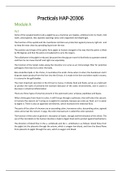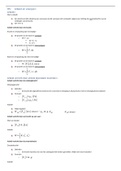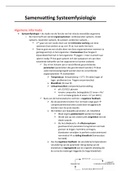Samenvatting
Summary Practicals HAP-20306
- Instelling
- Wageningen University (WUR)
This document contains all answers of the practicals of the course 'Human and Animal Biology part 2' at Wageningen University and Research and pictures with the items you have to learn for the exam. Drawings are selfmade using different information sources to get the right overview.
[Meer zien]








